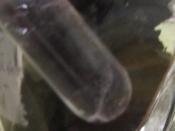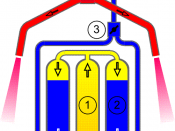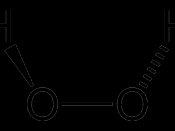The effect of changing pH, Temp. and Surface Area on enzymatic activity within the liver |
Stage 2 - Biology |
500491W |
Jazz Attwood-McEwan |
Summative Practical 1 |
Abstract
The experiment's aim was to discover the effects that changing the pH, surface area and temperature has on the activity of the enzyme, Catalase found predominately in the liver. The practical also derived the optimum situation in which Catalase would catalyse reactions efficiently and most effectively. The results of the experiment showed that Catalase worked best at a temperature of 30ðC, with a pH level of 7 and when the liver was crushed to increase the surface area.
Introduction
Enzymes are protein molecules found within living cells. Enzymes catalyse reactions by bringing the substrates together allowing the reaction to occur. Different enzymes are specialised for catalysing different reactions. The enzyme's active site is the corresponding shape to that of the substrate. These reactions occur within cells of living organisms without any changes to the Enzyme.
Enzymes work at extremely high speeds being able to catalyse thousands of reactions every second.
Hydrogen Peroxide (HâÂÂOâÂÂ) is a toxin found in cells that disrupts the activity of the cell. Catalase is the enzyme specialised for breaking down Hydrogen Peroxide. Catalase is a common enzyme and can be found in many cells within living organisms. High concentrations of Catalase can be found in liver cells. Catalase breaks Hydrogen Peroxide into Oxygen and Hydrogen in the following reaction:
Hydrogen Peroxide Catalase Water + Oxygen
2HâÂÂOâ Catalase 2HâÂÂO + OâÂÂ
Enzyme activity can be altered and slowed by changes in temperature, pH and chemical inhibitors. pH changes the shape of the active site lowering the ease at which the substrates can bind with enzyme, which in turn lower the speed at which the enzyme can catalyse reactions. An increase in...


